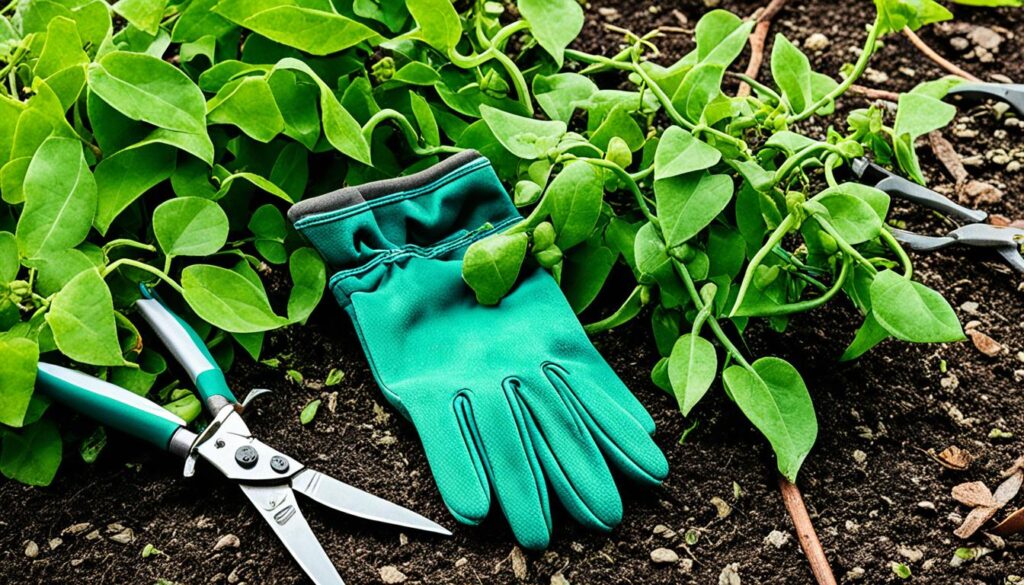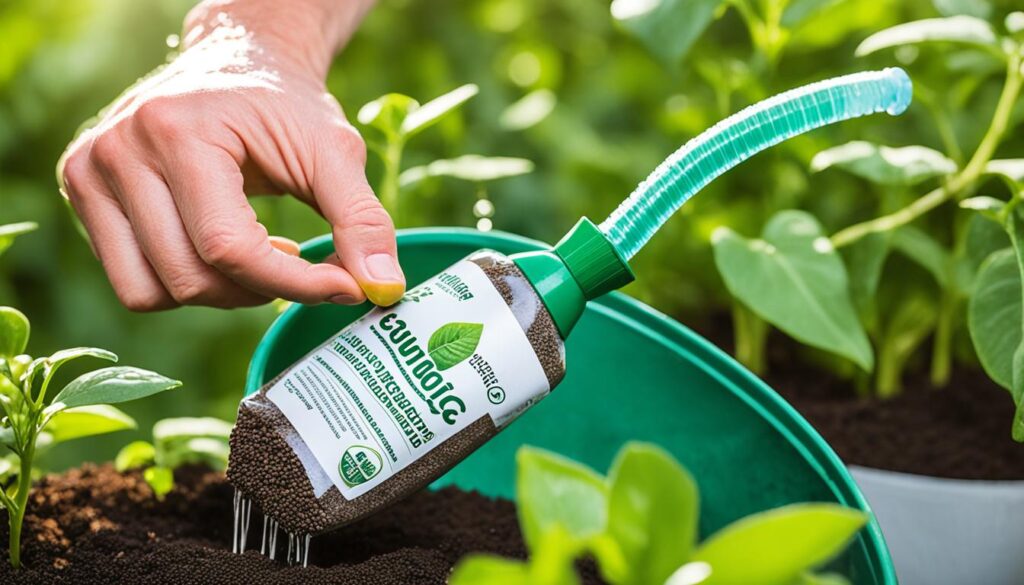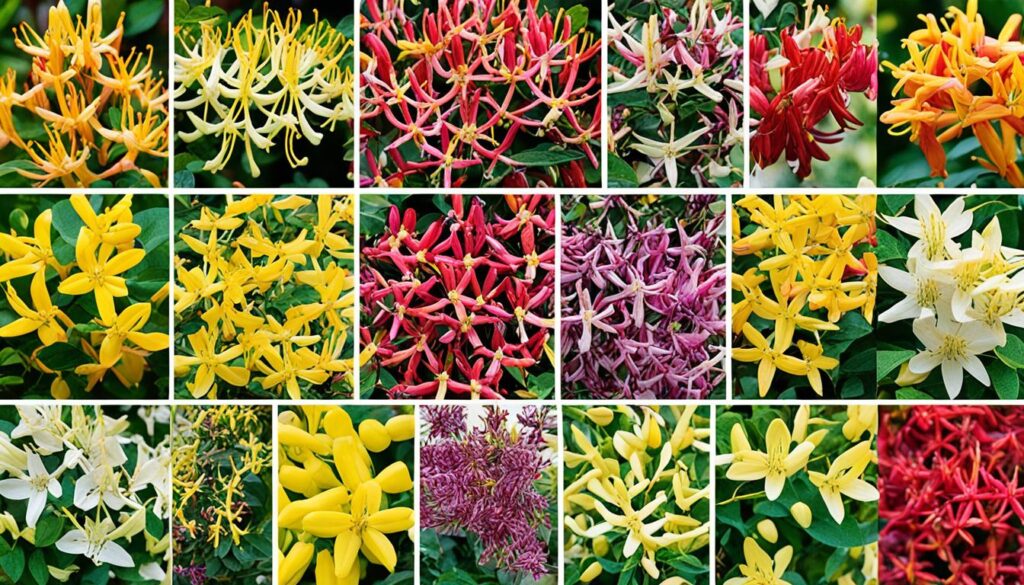Honeysuckle is a beloved flowering vine, known for its sweet-scented blooms that capture the senses. However, these plants might not always produce many flowers. This leaves gardeners wondering how to get more blossoms from their vines. Our guide will uncover the secrets to more honeysuckle flowers in your garden. We’ll explain the plant’s needs for flowering and how to solve common issues that affect its blooms.
If you love working in the garden, you’re in the right place. This article is for both beginners and experienced gardeners. It will give you the knowledge and techniques you need to make your honeysuckle plants thrive. We’ll talk about how to make sure they get enough sun and the right soil. Plus, you’ll learn about the best times for pruning and fertilizing. With our help, you’ll soon see your honeysuckle plants in full bloom.
Understanding Honeysuckle’s Flowering Requirements
To see lots of honeysuckle flowers, you must know about its light, soil, and water needs. By giving the perfect conditions, your honeysuckle will bloom well. This leads to a beautiful garden scene.
Sunlight Exposure for Optimal Blooms
Honeysuckles need six hours of sun each day. They will thrive in spots with some shade or those shielded from strong afternoon sunlight. Too much shade means fewer flowers, since sunlight powers their flowering.
For indoor plants, east-facing windows provide good light. If that isn’t enough, use grow lights to mimic sunlight. This helps the plant grow well and flower.
Soil Conditions and Watering Needs
Honeysuckles like soil that is wet but drains well and doesn’t hold too much water. They can handle dry periods but need water then to bloom. Always keep the soil damp but not soaked.
| Key Flowering Requirements | Details |
|---|---|
| Sunlight Exposure | At least 6 hours of direct sunlight per day. Partial shade may reduce blooms. |
| Soil Conditions | Well-drained, consistently moist soil. Avoid waterlogging. |
| Watering Needs | Regular watering during dry spells to support flower production. |
https://www.youtube.com/watch?v=LkFFIniVtsg
For your honeysuckle to flower well, it needs the correct amounts of light, soil, and water. These steps will make your garden look amazing.
Pruning for Better Honeysuckle Flowering
Proper pruning helps honeysuckle plants produce more blooms. The way, and the time, you prune makes a big difference. This guide will cover the best times to prune honeysuckle and the methods to prune honeysuckle. These tips can make your flowers more bright and beautiful.
When to Prune Honeysuckle
The right time to prune your honeysuckle vine varies. It depends on when it typically flowers. For kinds that bloom later, like the common honeysuckle, prune in the spring. This is before new growth shows up. Doing this means you get more flowers on the first stems of the season.
Kinds that flower early, however, need a different approach. Wait until the blooms are done. Then, cut back the stems with flowers on them by around one-third.
Is your honeysuckle looking really big and messy? You can give it a fresh start by cutting it back by two feet (60 cm) in late winter. This extreme cut spurs on new, strong growth. The result is better flowering in the next season.
Pruning Techniques for Abundant Blooms
- For climbing honeysuckle vines, trim it lightly anytime. But save the big cuts for fall or winter when it’s asleep.
- When you trim, make sure air can flow well around the plant. This keeps it from getting sick with things like powdery mildew.
- If your honeysuckle bush needs help, prune a third of it away each year for three years. This helps it grow fresh and strong.
- Try not to cut off the parts that will flower soon. This can make the plant give you fewer flowers.
By picking the right times and ways to prune, your honeysuckle plant will always look amazing. It will keep offering you sweet-smelling, colorful blooms every year.

Fertilizing Honeysuckle for More Flowers
Fertilizing the right way can make your honeysuckle bloom more. Use a balanced fertilizer without much nitrogen in the spring. This helps the plant grow flowers, not just leaves.
Adding organic matter yearly, like compost, boosts the soil and plant health. It gives needed nutrients and makes the soil better for roots to grow. Then, the plant can focus on making more flowers.
Young honeysuckle plants especially benefit from fertilizers. Use granules or liquids like Miracle Gro a few times in spring and summer. Follow the package on how much to use.
Find fertilizers with equal N-P-K numbers like 20-20-20. These are good for honeysuckle because they balance nutrients. Avoid high nitrogen to keep your plant flowering well.
Manure is also a good choice for fertilizing. Use a bushel for every 6-foot plant or every 100 square feet of bed area. It slowly gives nutrients and improves the soil for a long time.
- Use a balanced, low-nitrogen fertilizer in the spring
- Supplement with organic matter like compost or manure
- Fertilize young honeysuckle shrubs more heavily to boost flower size and quantity
- Opt for balanced N-P-K ratios like 20-20-20, 20-30-20, or 18-24-16
- Consider organic fertilizers like manure for long-term soil health
By caring for your honeysuckle this way, you’ll see more beautiful flowers. Enjoy a lovely and fragrant garden all year long.

Choosing the Right Honeysuckle Variety
When picking out a honeysuckle, you should think about when it will flower. There are early and late-flowering types. They add color and scent to your garden at different times.
Early Flowering vs. Late Flowering Honeysuckle Types
Early-flowering honeysuckle starts blooming in late spring. It flowers from the previous year’s stems and needs pruning after the flowers fade. In contrast, late-flowering honeysuckle blooms on new stems. You should prune these in early spring.
Having both in your garden means flowers for more of the year. This mix will keep your outdoor space smelling and looking lovely for longer.

In the US, some honeysuckles are seen as invasive. This includes Morrow’s honeysuckle, Amur honeysuckle, and Japanese honeysuckle. But, there are native types that are better for the environment, such as Lonicera sempervirens and Lonicera periclymenum.
For planting them, deciduous honeysuckles do well when planted in late winter. Evergreens, on the other hand, should go in during spring or fall. All honeysuckles like shade and soil that’s moist and full of nutrients. With careful selection, you can decorate your garden with beautiful, fragrant flowers for much of the year.
How do I get more honeysuckle flowers?
Looking to see more honeysuckle flowers in your garden? Here’s what to do. Focus on the right growing conditions. Make sure to prune each year. Also, pick a mix of early and late-flowering varieties to increase blooms.
Optimal Growing Conditions
Honeysuckle loves sun but does well in a bit of shade too. It needs soil that drains well. Give your honeysuckle plants six hours of sunlight every day. Mix in compost or organic matter with the soil. This gives them the nutrients they need and makes the soil drain better.
Pruning for Better Flowering
Pruning your honeysuckle plants lightly and often can lead to more flowers. Do this in spring, just before new growth starts. It gets rid of dead or damaged parts. This makes the plant grow more shoots that will bear flowers.
Selecting the Right Varieties
For a longer flowering season, choose a variety of honeysuckle types. Early-flowering like Lonicera periclymenum blooms in late spring and early summer. You should also plant late-flowering types, such as Lonicera japonica, for flowers in late summer and fall.
Remember to focus on the right growing conditions and prune yearly. Also, pick different varieties of honeysuckle. This will bring more beautiful and fragrant flowers to your garden.

Dealing with Common Honeysuckle Flowering Problems
Honeysuckle vines are known for their toughness. Yet, they can hit a snag in flowering. One issue comes from using too much fertilizer. Another is powdery mildew.
Too much nitrogen fertilizer makes honeysuckle grow leaves, not flowers. So, if your plants are all leaves and no blooms, check your feeding.
Go easy on the fertilizer. Once or twice a year is plenty for these plants. Use a balanced feed in the spring. Stay away from high-nitrogen ones. They mess with the flower-growing process.
Addressing Powdery Mildew Issues
Powdery mildew loves warm, dry conditions and can hit your honeysuckle hard. This disease looks like a white powder on leaves and stops flowers from growing well. It messes with the plant’s health.
To fight this, make sure your honeysuckles get enough fresh air. Trim any tangled or thick branches that stop the air from circulating. You could also use a mix of baking soda or a special fungicide for powdery mildew.
Dealing with these issues lets your honeysuckle vines flower as they should. You’ll get to enjoy a lot of beautiful, scented flowers all season long.
Propagating Honeysuckle for More Plants
Want more honeysuckle in your garden? Propagation is a great way to grow them. These vines are popular in gardens because they adapt well to different soils and lights. You can use easy methods like layering and taking cuttings to get more honeysuckle. This way, your garden will be filled with their beautiful, scented flowers.
Layering Technique
Layering is a simple way to grow honeysuckle. You bend a stem, bury it, and wait for it to grow roots. This is best done in early spring. At this time, the stems are flexible and ready to root. Just bend a stem to the ground and secure it. Make sure to keep the tip above the soil. Cutting the stem slightly where it touches the ground can speed up the process.
Taking Softwood and Semi-Ripe Cuttings
Taking cuttings is another method for more honeysuckle. Do this in late spring or early summer, when the plant is growing fast. Cut a 6-inch piece of vine under a leaf node. Take off the lower leaves. Using rooting hormone on the end can help the roots grow faster. Plant the cutting in a mix of soil and compost. Keep it warm and moist until roots appear.
As these plants grow, you can move them to your garden. With the right methods, you’ll have more honeysuckles gracing your yard.

Planting Honeysuckle for Maximum Flowering
For the best blooms, honeysuckle needs the right start. Plant it where it gets 6-8 hours of sunlight daily. The soil should also drain well to prevent water from standing.
Make sure the plant has something to climb on, like a trellis. This helps it spread out to grow more flowers. Good support is key to seeing the plant in full bloom.
Pick the perfect spot, with enough sun and good drainage. Add a strong support system for climbing. Then, you’re on your way to a season filled with the sweet scent of honeysuckle flowers.



